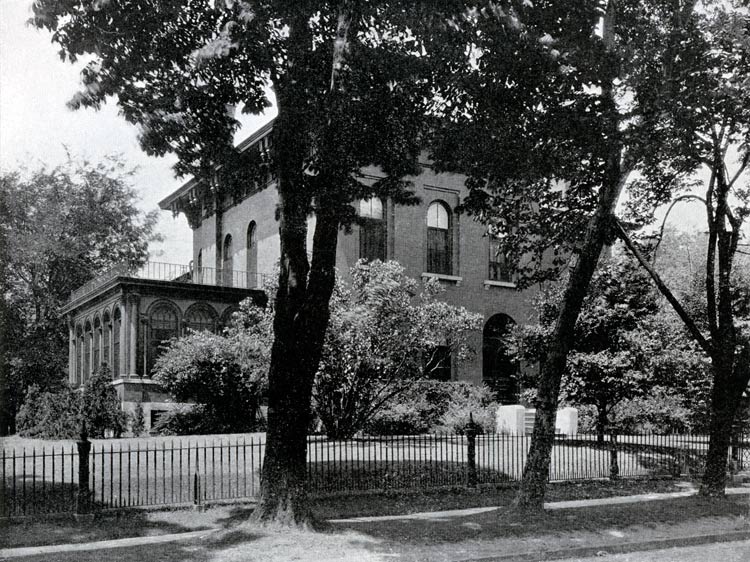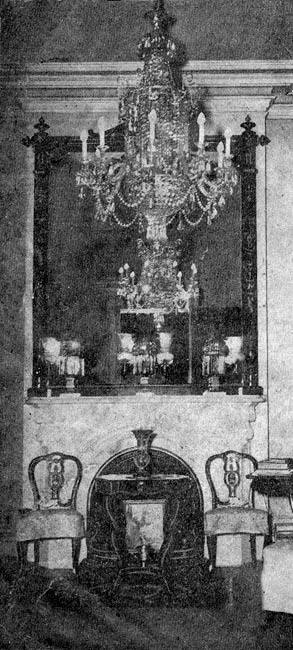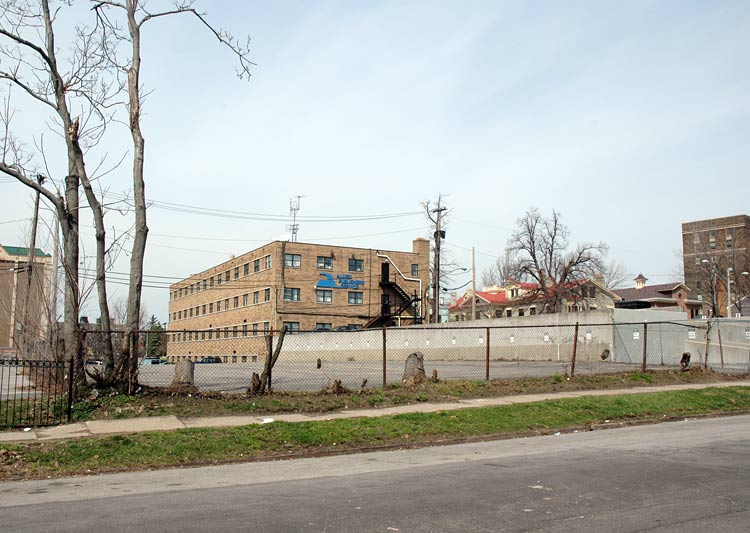The land on which the Miller-Rumrill house was built belonged first to the U.S. government and was part of the Poinsett Barracks. In 1854-55, A.D.A Miller purchased a very large lot, 200' frontage on Franklin Street and 175' deep, from the government which had moved its garrison to Fort Porter. Mr. Miller, who emigrated from Switzerland to Buffalo in 1834, was a highly successful wholesale grocer and produce dealer in partnership with John Greiner. He chose the location for his home because the elevation would shield his family from flooding to which other parts of the city was prone. The lot was surrounded by trees, in the midst of which was constructed a square, two-story structure with a square cupola on top. It was of brown brick with artistic wrought iron balconies on the lower front windows and a wrought-iron fence along the front.
The Millers had seven children; daughter Juliet married Edward D. Holman. The Holmans lived with the Millers and had two daughters, one of whom died in childhood. Their surviving daughter, Jennie, married Henry Rumrill, Jr. on December 19, 1900, in the same location in the drawing room as her mother had. They moved into the home and lived there for the rest of their lives.

The home as it appeared in 1931. Source: "Buffalo, the City Beautiful.." private collection
Mr. Miller had intended to add a conservatory on the southern exposure but it was not constructed until the Rumrills occupied the home. Seen above, it was a substantial addition built to match the architecture of the house and opening into the gardens. "This room, which on pleasant days is drenched in sunshine, is used as a breakfast room...This is a particularly inviting room with a colorful vista of the gardens beyond..." [Courier, September 27, 1934]
The Rumrills were active in their community. Mrs. Jennie Rumrill, a Buffalo Seminary graduate, was treasurer of the Women's Educational and Industrial Union for eight years. Henry Rumrill, Jr. was associated with his father's contracting firm for many years, and served as deputy building commissioner under Col. Francis Ward beginning in 1902. They had no children.
"The interior of the house is one of magnificent distances, after the prevailing mode of its day.. The ceilings are very high and entering the wide hall, which runs through the center of the house, there is a staircase of rich, dark wood with a graceful turn at the top. The newel post is carved in a somewhat ecclesiastical design, and there is also a huge mirrored hat rack, which reaches to the ceiling and is magnificently carved. The long drawing room is filled with priceless antiques reminiscent of their former occupants, while many art treasures, which Mr. & Mrs. Rumrill have gathered in their extensive travels abroad, add charm.." [Courier, September 27, 1934]
 The formal drawing room, Image source: private collection
The formal drawing room, Image source: private collection
In 1950, after the death of Henry Rumrill, Jr. at age 85, the Buffalo Evening News sent Mildred Spencer to the home, empty for the first time in three generations, except for the housekeeper who showed her around. She found a home that appeared as a time machine, with original lace curtains and furniture of the 1800s augmented by additions made by the Rumrills. The door still bore the silver nameplate of its first owner, A.D.A. Miller.
"There are seven marble fireplaces, none of which has been used since shortly after the turn of the century. In 1902 the first furnace was installed in the house...There are mirrors everywhere - over the fireplaces, over the dressers, rising from floor to ceiling in the drawing room and the library. Many are so large that they would never fit in the lower-ceilinged homes of today.
"The drawing room has two mirrors - one that reaches from floor to ceiling and another, nearly as large, which reaches from the marbe mantle of the fireplace to the ceiling. Both are framed in carved ebony and reflect the huge shimmering chandelier that the Rumrills brought back from Venice in one of their trips abroad. On the fireplace stand three old gas lamps with cut-glass shades and metal bases so heavy that one can scarcely lift them.
"There are many other reminders of bygone days throughout the house. At the front door, visitors announce their arrival by pulling an old-fashioned bell-pull that pulls a wire running through the cellar to a bell hung in the kitchen.
"In the kitchen, behind the old-fashioned gas range that the Rumrills used, stands the wood-burning range installed by Mr. Miller in 1858. The cooking top is scarcely knee high, the ovens built into the wall adjoining the chimney. Like everything throughout the house, the stove is remarkably well-preserved. On might also think it had been installed only yesterday.
"The furniture is largely made of oak, rosewood and Hepplewhite mahogany. Many of the serving buffets, bureaus, and tables are topped with marble. In the downstairs bathroom stands an old china tub that antedates the more-modern plumbing by many years.
"Because the MIllers had seven children, the master bedroom was included in the first-floor plan, leaving the second floor for the children. The dark, carved bed is so heavy that the servants have never been able to move it."

536 Franklin Street in 2009
The home was in Mrs. Jennie Rumrill's name and, when she died in 1943, her will stipulated that, upon her husband's death [July 1950], the home and property should become the property of Children's Hospital. In her will, she asked that the home be used by the hospital as a home for convalescent children; if that could not be done, then the Surrogate's court could approve use of it it in other ways "connected with the support, protection, and care of children, preferably those ill or convalescing."
The hospital apparently did not have sufficient funds to operate the home as stipulated, because on October 3, 1950, the home and property were sold to Temple Beth Zion. The $38,970 selling price was to be put into a trust fund and the income later used for construction of a new hospital building or addition. Mrs. Rumrill had also specified that the residue of the estate be placed in an endowment fund for the hospital. That amount was around $250,000.
The home was razed some time after 1950 and the property is currently a parking lot.
[Henry Rumrill, Sr. was one of Buffalo's foremost early citizens. Read about his career as a builder.